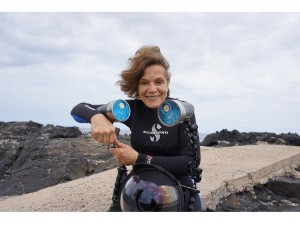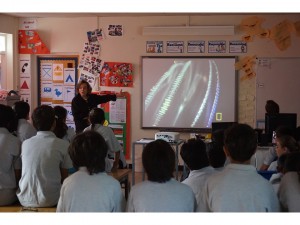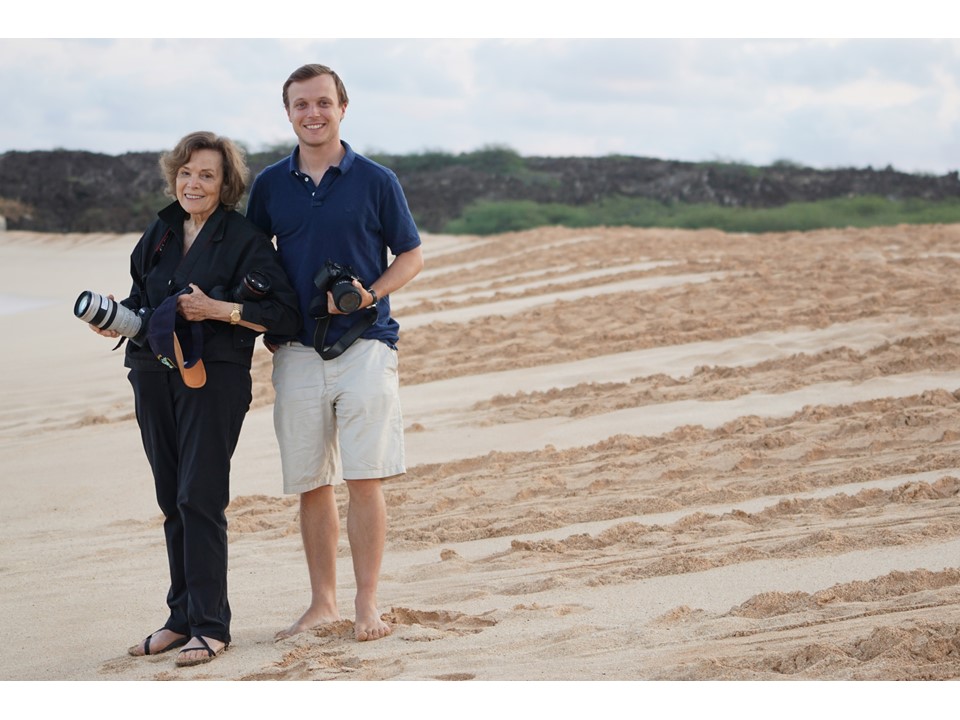Protection may be Imminent for Great British Oceans
February 16, 2015
By Courtney Mattison
Mission Blue has teamed up with a coalition of leading marine conservation organizations to urge the British Government to step up to its responsibility to safeguard the maritime zones of the UK’s overseas territories by creating three of the largest marine protected areas (MPAs) in the world. Through the Great British Oceans campaign, this alliance between 106 signatories including The Royal Society for the Protection of Birds (RSPB), Greenpeace UK, the Pew Charitable Trusts, the Marine Conservation Society, the Zoological Society of London, the Blue Marine Foundation, the Marine Reserves Coalition and National Geographic Society is gaining support for the UK to fund large-scale, full marine protection in the waters surrounding Ascension, Pitcairn and South Sandwich Islands.
The United Kingdom has jurisdiction over the fifth largest combined ocean area in the world – a collection of territories nearly 30 times the size of the UK itself.1 The three MPAs proposed around Ascension, Pitcairn and South Sandwich Islands would more than double the size of existing protected areas in the global ocean.2 Fully protecting these areas would mean shielding countless rare and threatened species including endemic seabirds, whales, turtles, penguins and corals from the enormous threats of overfishing, pollution and resource extraction.

Mission Blue founder and National Geographic Explorer-in-Residence Dr. Sylvia Earle visited Ascension Island earlier this month with IUCN’s Marine Vice-Chair of the World Commission on Protected Areas, Professor Dan Laffoley, and RSPB’s Head of Overseas Territories, Jonathan Hall, to explore this Mission Blue Hope Spot, draw attention to its values and seek the views of residents, many of whom have lived on the island for decades. A core part of the trip was therefore listening, learning (and diving!) with the people on island, and then communicating their views back to the UK Government.
Ascension Island lies in the middle of the tropical Atlantic Ocean, nearly 1,000 miles from the west coast of Africa and 1,400 miles from the east coast of South America. Smaller geographically than the city of San Francisco and with a working population of only 800 people, this small but mighty island is considered to be one of the world’s most important seabird breeding sites, hosting the entire global population of the Ascension frigatebird and half a million sooty terns. This volcanic island also supports the Atlantic’s second-largest green sea turtle breeding population. Near shore, hawksbill and green sea turtles abound along with resident bottlenose dolphins and humpback whales, which migrate to the island each fall to raise young in the tropical waters. Black triggerfish (Melichthys niger) are super abundant around the island, along with eels and grouper.

Farther offshore, marlin, swordfish, tuna and sharks patrol the deep waters, but in fewer numbers today due to previous commercial fishing. Earle, Laffoley and Hall only saw one or two small Galapagos sharks during their four days of diving around Ascension Island – an observation that would have been unthinkable just a decade or two ago. Martin Harper of RSPB remarked on the challenges of protecting Ascension’s unique ecosystem:
“The UK Government doesn’t allow anyone to live permanently on Ascension, yet also expects the temporary residents to manage this vast marine area at their own cost on its behalf. The local Government therefore had to sell licenses to Taiwanese long-liners from 2010-2013 in order to try and fund their marine management, but due to limited capacity was unable to ensure good environmental standards or minimise bycatch of turtle and shark species. This fishery has now been closed whilst Ascension reviews its marine options, but, sadly, reports indicate that previously abundant large shark species such as hammerheads have mostly disappeared from Ascension’s inshore waters, not yet to return.”3

The Ascension Island Marine Sustainability (AIMS) Project began studying marine biodiversity around the island in April 2014 with funding from the Darwin Initiative. Earle, Laffoley and Hall went diving with members of the AIMS team to observe the island’s marine wildlife firsthand. The team also spent part of their weeklong visit meeting with local residents, officials and schoolchildren about their valuable marine ecosystem and hosted a premier of the Mission Blue film. RSPB’s Jonathan Hall highlighted the unique challenges Ascension residents face, stating:

“The 800 people who work on Ascension are surrounded by a marine area teeming with life and larger than Germany. They need support from the UK Government to protect this key Atlantic ecosystem.”1
After their visit, the team flew to London to address the House of Commons on February 11. Dr. Earle remarked on the challenges faced by the local community and said “It’s time to support them.” She also emphasized the importance of creating large-scale MPAs, stating:
“We have a long way to go to reach our global pledge of protecting 10% of the world’s ocean by 2020 so action needs to be taken now to protect these precious ecosystems. By protecting its overseas territories, the UK has the potential to create the largest marine reserve in the world and make a significant contribution to this global target.”
By protecting Ascension Island as well as the Pitcairn Islands (another Mission Blue Hope Spot) in the South Pacific and the South Sandwich Islands in the South Atlantic, the UK could surpass the United States as the world leader in ocean protection. The Great British Oceans campaign has noted that enforcing and monitoring the proposed marine reserves would be cost-effective, with the use of novel satellite technology being developed in the UK by the Pew Charitable Trusts, the Satellite Applications Catapult and the UK Government. This technology enables analysts to monitor and report suspicious and illegal fishing practices in marine reserves. Pew has already agreed to support monitoring efforts in the proposed Pitcairn MPA.1
This unique opportunity to create fully-protected, large-scale marine reserves in the UK Overseas Territories comes as the UK general election approaches in May 2015. Public pressure is mounting on government officials to provide support and safeguard marine wildlife. There is still time, but not much, for the UK to do its part to safeguard vast expanses of ocean – and the health of our planet as a whole.

Read more:
- IUCN Blog / Jonathan Hall
- PEW Satellites to end IUU Fishing
- RSPB: Ascension Island Ocean Sanctuary
- The Times of London
_________________________
Featured Image (top): From left to right – Andy Richardson (Senior Marine & Fisheries Scientist), Dan Laffoley, Sylvia Earle, Emma Nolan and Kate Downes of the AIMS Project preparing for a dive at Wigan Pier, Ascension Island.







